We test out general masking tape which has come a long way from the American automobile and car design industry in the 1920s to being every social media artists’ favourite stationery tool. Ironically the appeal of the adhesive tape is its ability to peel off! When used deftly it produces great negative space in artworks. Is it messy? Yes. Is it fun? Affirmative.
Reviewing the Masking Tape
Vishal: Hello and welcome to Stationery Test Drive. Today we are going to be looking at masking tape. I am Vishal.
Minjal: This is Minjal.
Samir: I am Samir and before we go on to talking about the masking tape, Minjal what have you been upto?
Minjal: I think collectively we’ve spoken about the merchandise that we’re launching on Inky Memo and we’re very delighted that we can reveal some products here!
Vishal: Right, so your first product, Inky Memo’s first product is a notepad! Samir, why don’t you tell us more about it?
Samir: We wanted to make stationery that celebrates stationery. So we went for graphics that were very much using elements that were all about stationery. Pencils, pens nibs, all of our favorite things and we wanted something that was classic and simple and line art, and this is what we came up with. We are quite happy with it.
Vishal: It looks great and I hope all of you go out and get one because it’s great for everyday note-taking and also for possibly doodling. If you do get one of these and use them please tag us on social media, it’s @inkymemo and we’ll have links in the description below, but now on to stickier subjects, which is of course masking tape.
Now masking tape is not a usual thing you might think of as stationery but we all have it, we all use it and we all use it in very, not very successful or not even its original purpose ways. So Samir tell us about what masking tape was originally made for?
Samir: Masking tape was originally invented for car detailing in the 1920s and 1930s. So if you think of classic cars especially American cars from that period, two-tone and two-color cars were all the rage and so to have that perfect toning of two different paints masking tape was invented to make those clean edges.
What is a Masking Tape?
Vishal: So this is like a thin paper with an adhesive on the side. In case you’re one of the few people in the world who is watching this video and has no idea what masking tape is or if this has somehow reached aliens then this is what we used to add stripes to our motor vehicles. And the one adhesive layer goes and sticks down onto, in this case paper and as stationery people and not car detailers that’s where we ended up having problems and we’re going to cover pretty much the same problem we all had but also one of the reasons why we think you should get masking tape.
So why don’t we all just show our work as we do always. Let’s just put them all together because they’re all here, they’re all different enough, but I think we all went for the same classic rendition of what masking tape can do for us, which is to mask out areas and then put paint around. Is that right? Did we all do that in some form?
Car Illustration with the Masking Tape
Samir: Yes, pretty much. I just chose to do a car because I thought it was appropriate to where masking tape started.
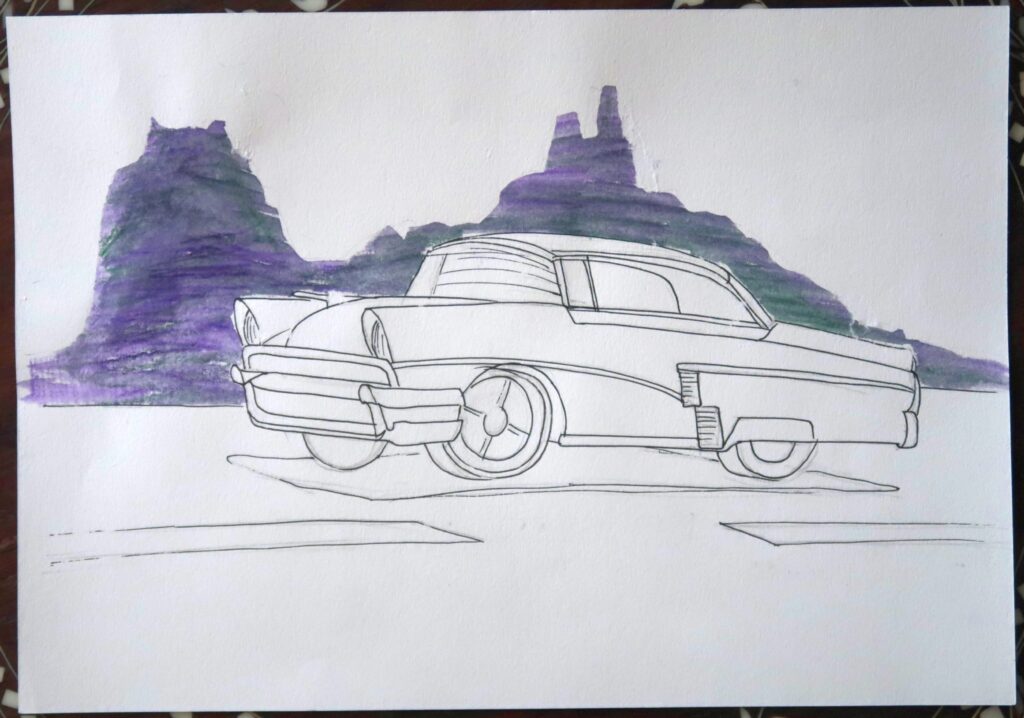
Vishal: And it has pinstriping, although you’ve not done pinstriping there, you did that with the fine liner which I think we’ve covered in the previous episode. So check that one out. Minjal you have done?
Abstract Art with the Masking Tape
Minjal: Cool Pinterest, trending art.
Vishal: Geometric art I think it is.
Minjal: Yes, all the hashtags.
Samir: I’m sure Ikea has something just like that.
Minjal: Actually this design is fairly popular with young artists who are just beginning to paint and experiment.
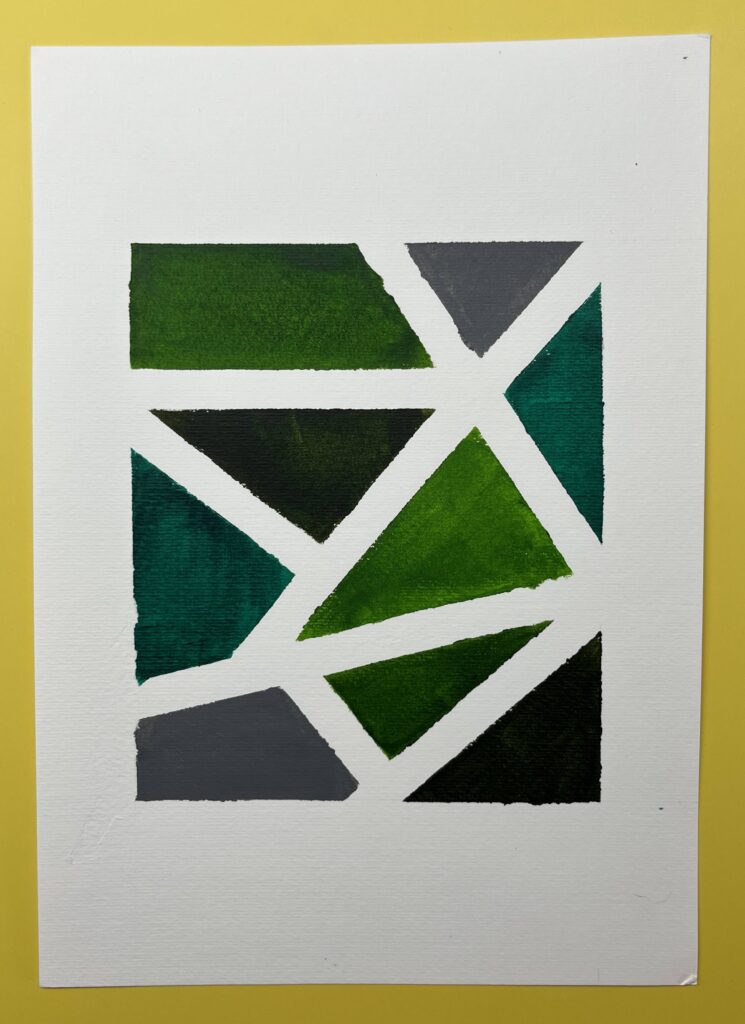
Vishal: It is a great exercise in tone, value and all the basics of art. I did what I usually do, which is a portrait and I put some gouache over it, and masking tape of course, to mask off an area. And I don’t know if it’s going to show up in the 4k here. We’ll put in a zoomed shot somewhere here but all of us had the same problem which is that these are not cars, these are pieces of paper, pieces of papers behave differently to the sheet metal of a car. And every time we were removing the masking tape we all had tear out.
Vishal: I think Samir got the neatest lines in terms of the pull. We had bleed because Minjal you used gouache?
Minjal: No, I used acrylic paints and this actually is 400gsm acrylic paper, and right, yeah, the peel off is probably as bad as this is a one.
Portrait with the Masking Tape
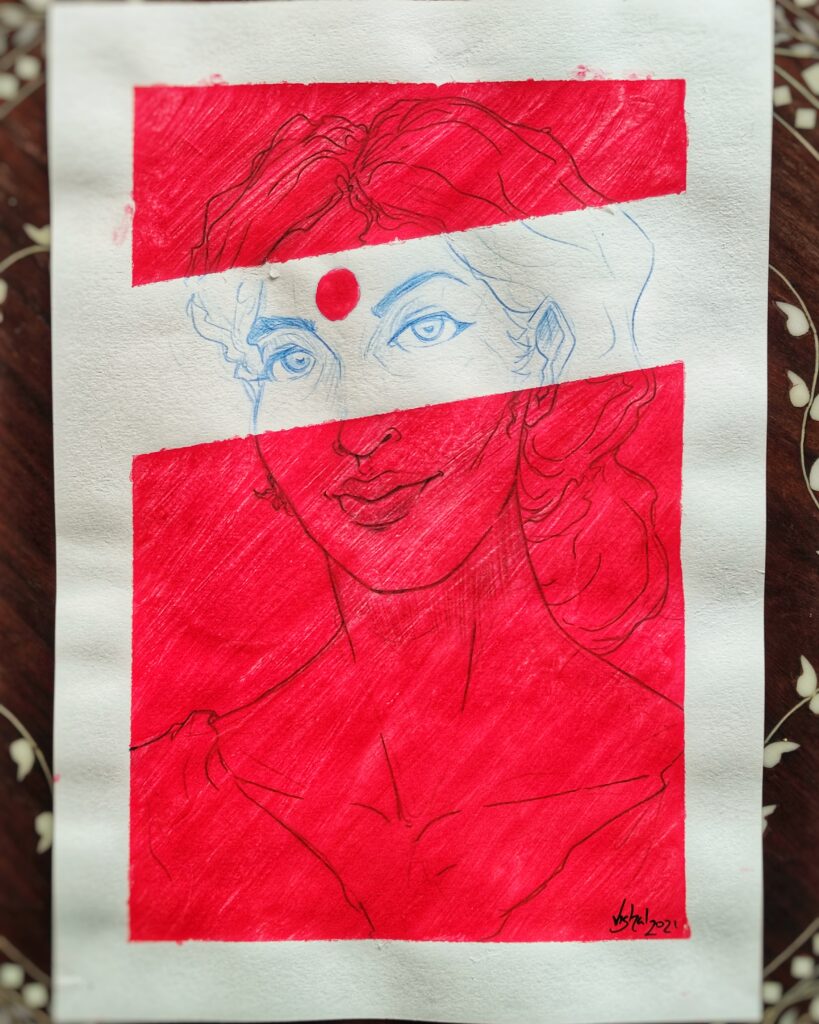
Vishal: Yeah, this is a 150 gsm cartridge paper, nothing fancy. And yes I had peel off here, I had bleed. This is gouache. I guess technically it should be thicker than acrylic going down. But you don’t get those nice satisfyingly clean edges and I’m sure there are people who go around watching ASMR videos of of satisfying masking tape pulls. That’s actually a thing that happens, especially for artists.
Masking Tape Tips and Tricks
Samir: Did any of you kind of dull down the adhesive before you put it on the paper?
Vishal: I did. And this is a technique that I learned from watching videos of people doing it. I’ll try to demonstrate what it is, but basically now we have a piece of masking tape here. If I pulled it out you can see there is always going to be some, so there’s techniques to how you pull it out but there’s a way to prime this. So now this has much less adhesion than when I first started off. So what you do is you pull out a piece of tape and then if you have a pair of jeans or you can even do it on your hand and finger.
Yeah you just, you press it down so that some of the glue goes on to that surface and you can wash that surface later of course. But then that means that this is less sticky. Hopefully it forms a barrier and that is the problem with putting it onto a couch or onto a pair of jeans, you don’t get that nice edge anymore, which is why I had bleed out and Minjal you had some good edges and some rough edges.
Samir: I think the the difference between what you guys did and what I did is that you used the natural edge off the tape right and maybe that’s why you got less of a clean edge whereas all of my edges were things that I cut out shapes with a scissor, so I was using the central part of the tape rather than the edge of the tape, as an edge.
Vishal: And the scissor itself will end up biting down because this is a paper medium. So if you can imagine it as a substrate of cellulose and glue it has a certain thickness to the cellulose. I’m guessing when you cut, unless it’s a super sharp scissor.
Samir: The glue sort of pushes down.
Vishal: The glue and the paper will sort of form an edge. Yeah so that might have helped you there, we should see that because I’m guessing the factory edge is quite ragged.
Samir: Yeah and it’s also open to the elements so that there’s probably a bit of dust and things that get in there and make that glue not quite as sharp as it could be.
Different Types of Masking Tapes
Vishal: Now we aren’t working with the most, let’s say artist grade tape, we worked with regular, this is used by carpenters and painters all over the world and this is the cheap stuff. This is the stuff that you’re using on your wall and you know, and I looked it up and there are now automotive grade pinstriping, masking tapes and they’re all vinyl, they’re not even paper. There are other tapes that people are familiar with? What other types of tapes do artists use?
Samir: I think there is, similar to the the auto detailing tape, there are plastic-based tapes that artists use. But I think one of the problems we have been facing with this is masking tape has become this generic thing.
Samir: We now call anything that’s a paper tape, masking tape. Whereas the original masking tape for masking has a very specific use and a very specific way that it’s made and I don’t think most of these are made that way anymore.
Vishal: Before we go any further, basic term, this would be a mask, where you mask out or you add a layer and then you put paint, so the paint doesn’t go on the part that you are masking, hence masking tape. It’s a term that people use even today in digital photoshop and things where you create a mask over something to either hide or reveal. So yes that’s why it’s masking tape, it has nothing to do with wearing masks, it’s all to do with metaphorically masks. But tell us about the history.
History of the Masking Tape, 3M and the Automobile Industry
Samir: So I think some of the history kind of explains why we are having problems with this. When two toning in automobiles started in the 20s there wasn’t a tape like this that you could just use. So what painters would do is to use baker’s paper, apply a glue to it, and then kind of make their own tape.
It’s waxy, so now what happened then was that a brilliant engineer who worked for 3M saw this and 3M at the time was just making sandpaper for the paint jobs. And he went and experimented and what he did was to try some sort of crepe paper and this is what we now have is somewhere between crepe paper and baker’s paper. But the trick to masking tape when it was invented by 3M was that it was a pressure-sensitive adhesive. I don’t think modern masking tape unless you buy very high grade stuff is pressure-sensitive.
Vishal: Right, so it activates only upon applying pressure to it.
Samir: And deactivates. So when you pull, it’s pressure-sensitive and hence it kind of comes off easily. Now the problem with most of this masking tape is that it’s used largely by as Vishal said carpenters and you know house work and sort of hardware-oriented uses rather than fine art uses. And you’re okay with being a little forceful on a wall but that doesn’t quite work with paper.
Vishal: And you can do touch-ups on walls which most of us are a bit too precious about.
Samir: So I think the the thing that we call masking paper, the masking tape today is maybe not as refined as what it started out as and there’s a lot bigger of a range of tapes that we just call masking tape as a generic term. So it might be that for art use you just need to get something that’s a lot more specifically made for paper use.
Vishal: Minjal why don’t you tell us more about the actual paper you used? You used the thickest paper, this is technically something that should have just gone off without a hitch, right?
Minjal: Yeah so I started off with a cartridge paper fairly similar to yours, I ended up completely shredding it.
Vishal: That happened to me as well, we’ll talk about that.
Minjal: Yes so it was obviously not something I could even salvage at all. And I actually thought you know Brustro does really good acrylic and watercolor papers and I wanted to bring out the acrylics, so I thought I’ll use this paper and you know it turned out fairly well, say you know, I was able to successfully pull off most of this without any damage to the paper. I did get a little excited because it was similar to you know peeling Fevicol off your fingers, I got really excited at the end and just started pulling off the tape.
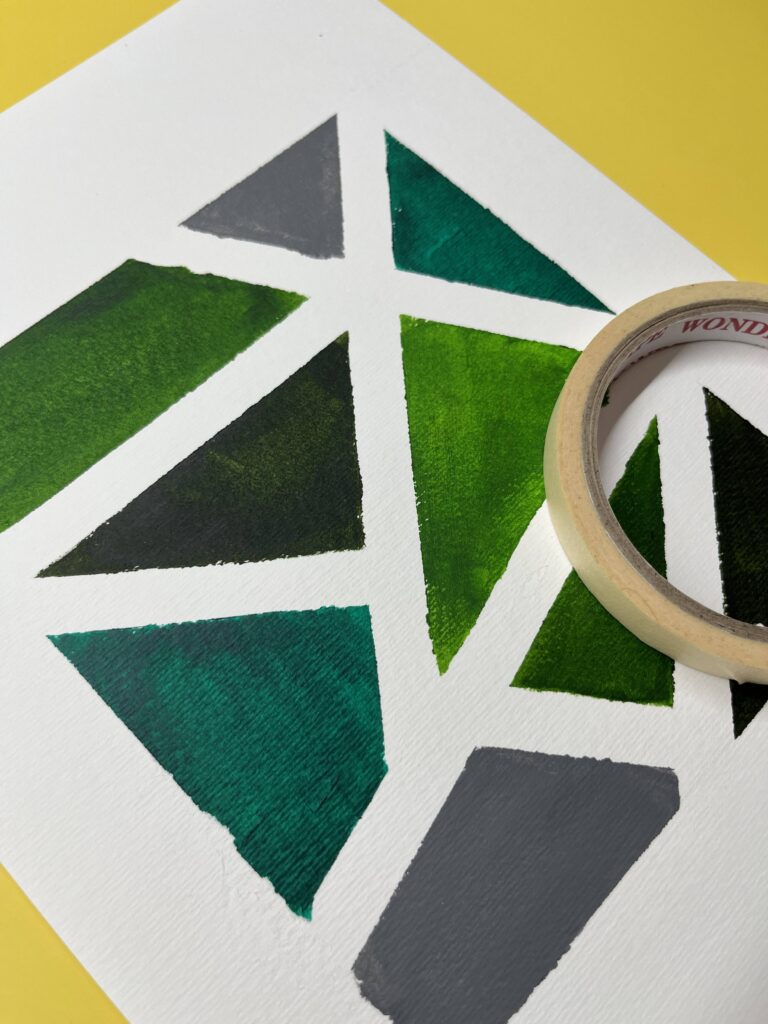
Samir: Minjal pulling Fevicol off her fingers video will be coming soon.
Vishal: Yeah that should be on our Only Fans! Speaking of Fevicol though there is a masking fluid that behaves similarly but is an actual fluid medium that we might test out in the future because that is more of an artist medium. But you’re right, that there is a whole genre of people doing satisfying pulls, which is literally videos of people doing that, with close miking. So if you’re a fan of that please tell us, who hurt you?
Samir: And if you want us to start a parallel channel of ASMR where we just shut up and pull things off paper.
Vishal: I think there is a lot you can do with masking tape, I think that we can try out more of them. Very clearly because this is Stationery Test Drive we just go for things that are available, things that are around us and we literally show you our first or second try. In this case like I said I used a similar cartridge paper but I went very overzealous with this, like that, and it ended up in the garbage and maybe if I have a picture on my phone of the process in between I’ll show you.
Samir: This was Minjal’s second try as well. In my case this was my first but I think it was because I was as careful as I could be but as you can see there’s still stuff that’s peeling off.
Vishal: And you have saved your tape.
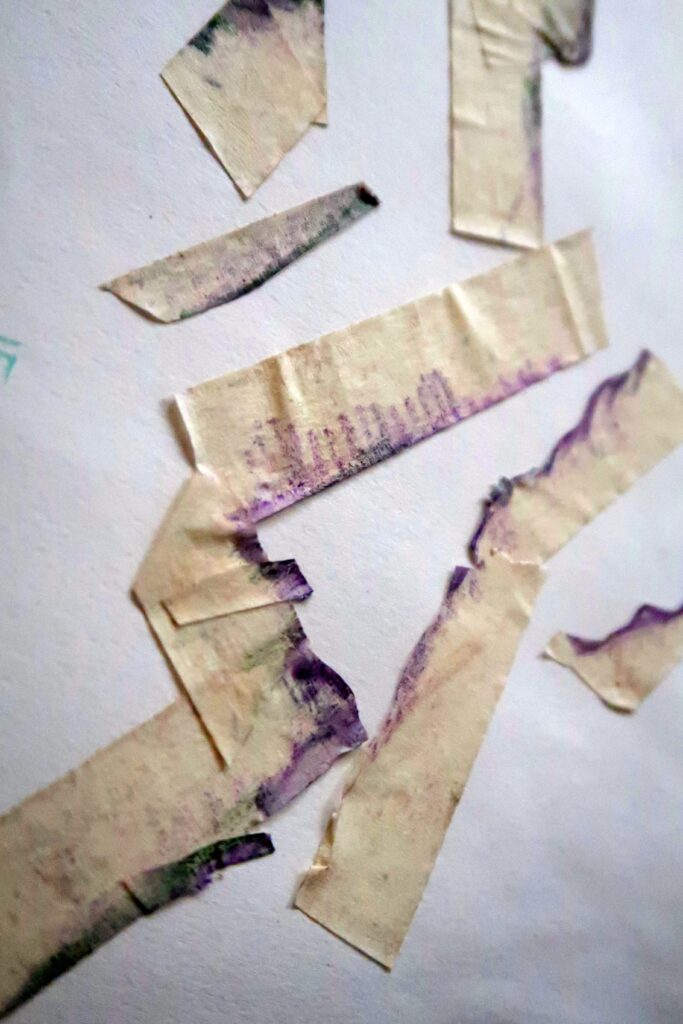
Samir: Yeah so just to see what the process is like. These are the pieces that I used to form the shape of the hay, for example.
Vishal: And, those are your cut edges with the scissors.
Minjal: Is this an NFT in the making because well it looks like one.
Samir: It becomes an NFT after I start animating it in GIF, only then is it worthy.
Vishal: Well, plenty of non-fungible things in the universe but masking tape is not one of them. It’s ubiquitous and like Samir says to the point where getting actual masking tape is getting increasingly difficult. I went and looked for one and someone gave me what would be generically called scotch tape which is plastic and leaves a residue and is totally not good for this sort of thing. Painters tape as this is sometimes also called is not supposed to leave a residue but the problem is it also takes paper with it.
Minjal: So Vishal would you have applied multiple layers?
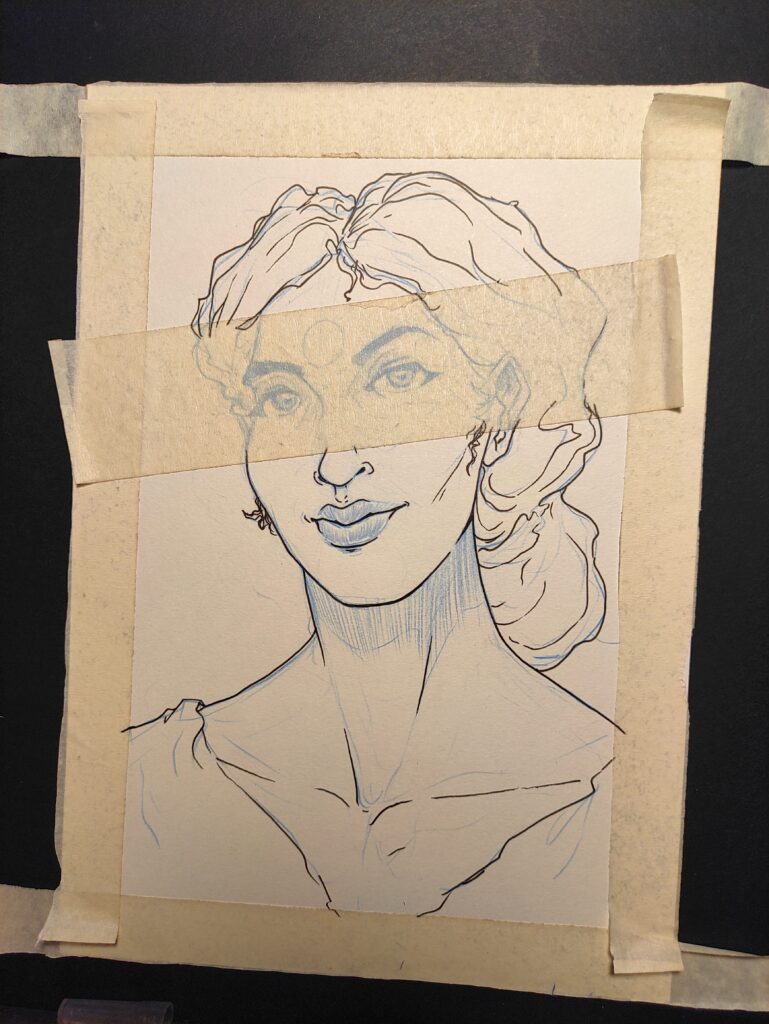
Vishal: No, the good thing about masking tape is that you get it in many sizes. I just used a two inch one. I just put one over it.
Samir: Because that’s the thing when we were growing up we used masking tape for packing not for masking.
Vishal: So we’re in the tropics, we’re here in India right now and Samir and I’ve spent time in the Middle East. I think in some ways the scotch tape, it would just deteriorate, right? It was too hot and humid.
Samir: Too hot, it would deteriorate with exposure to the sun.
Vishal: As in you would literally not be able to peel it off it, you’d just get a tape that you could not use. So that’s why we grew up with masking tape as a normal packing material not as an art material. So obviously when we started this channel, this series, we thought well that’s something that we are not used to, so that’s why we decided to explore it. I think it’s a, if not a fully successful experiment, then at least a worthy experiment that we need to come back to.
Samir: You can clearly do things that you can’t do by just painting.
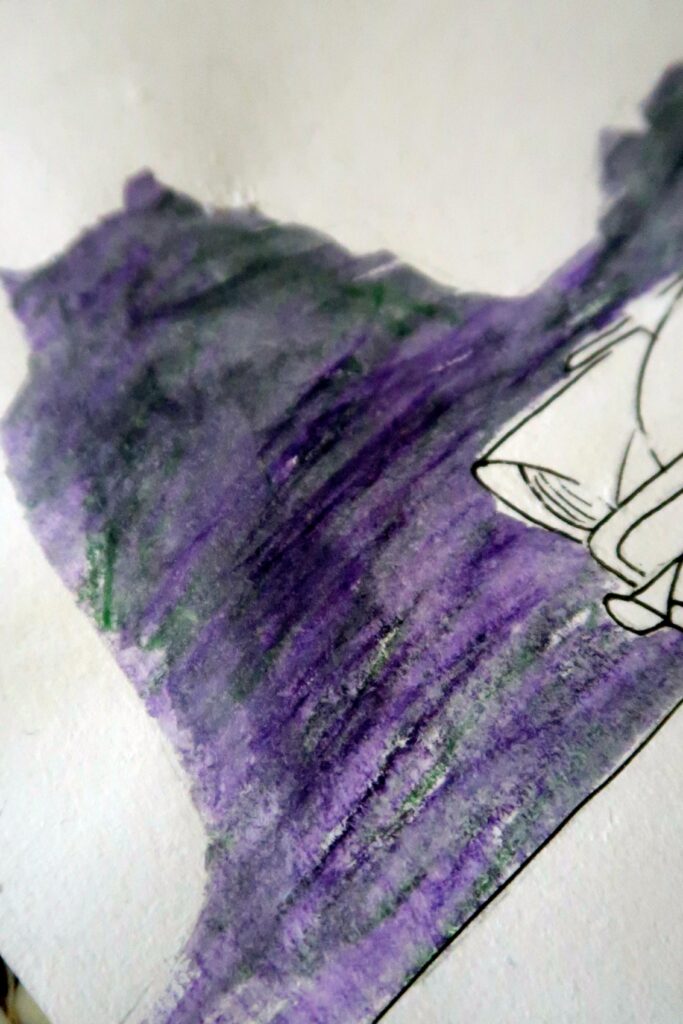
Vishal: Right, those edges!
Samir: These are shapes that you just could not get by using a brush so there’s clearly a use for it. I guess we have this channel now, so at some point we need to explore the different kinds of masking tape and figure out what really works well with paper.
Vishal: Because I’ve seen things that are closer to baking parchment, more cardboardy tapes, we’ve also seen an explosion in washi tape which is almost used as a decorative tape itself and it’s not used to mask in any way.
Samir: Yeah but it is essentially masking tape.
Vishal: Right so we should have a look at that and masking fluid like we talked about before which is actually used as masking but there you apply it with a brush, it dries over the paper, hopefully, you paint over that and then like Minjal’s famous Fevicol example, you literally rub it off and you get more fine details. And yeah I think we have covered, no pun intended, pretty much all we can with this type of masking tape. I am torn! I can say that finally.
Samir: Our alternate channel with stationery puns is also coming up soon.
Vishal: I mean you know we called it Inky Memo, the puns do write themselves and we have written all of them, so don’t try to steal them, they’re ours. But I think that’s pretty much it for this episode we will be back with more stationery, more experiments and of course rip and tear with caution!
Get the Masking Tape
1. HKACSTHI 4 Packs Artist Tape White Drafting Tape – https://amzn.to/34YVFs9
2. Scotch General Purpose Masking Tape – https://amzn.to/3A7Kitd



